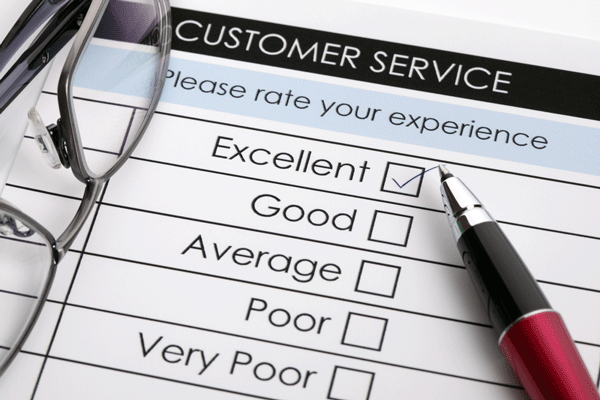Empowering Mobile Workers to Enhance Customer Experience
Operational excellence is the goal of every organization; however, the efforts required to achieve this goal are unique in the field service...

Many companies now use customer surveys to accumulate data and learn more about what people want. If you're using this tool in your own business, do you feel that you're really getting the most out of your surveys? After all, getting data is only the first step in making improvements. You then need to analyze and interpret it. Let's look at some tips for analyzing customer survey data so you can use them for your benefit.
The first key to getting helpful feedback from surveys is to ask the right questions. It's fine to ask general questions, such as "How satisfied were you with your purchase?" However, it's more important to drill down to specifics. You want to know exactly what customers liked and didn't like.
Both written feedback and quantifiable responses are valuable. Comments provide insights into customers' very personal reactions. You might also have yes or no questions or let people rate different aspects of your business on a scale from 1 to 5. This approach is useful when you want to analyze large quantities of data. You can easily arrive at an average and set goals towards improving scores. At the same time, don't overlook the value of reading about people's experiences in their own words. It's easy enough to do both, such as with a survey followed by a space for comments.
It's also possible to convert comments into quantifiable data. This takes some work but is a worthwhile endeavor to clarify responses. You or a team member can read comments and categorize them, perhaps into categories such as positive, negative, and neutral/mixed. Whether you're asking open-ended questions or ones that get yes/no or numbered responses, think carefully about what you want to find out. For example, here are some possible questions to ask:
When it comes to interpreting customer data, you want to look for patterns. No one agrees about everything but what really counts are issues that large numbers of customers care about. If you look at Amazon reviews, you'll often find one-star reviews for the most popular products and five-star reviews for the least popular. Outliers, however, are really not your main concern.
In some cases, surveys will shatter your own assumptions and preconceptions. For example, you and your team may believe that your latest software program is easy to use. However, if more than half of your respondents say it's confusing, you need to rethink your approach. Customers don't always have the same perspective as business owners, managers, IT people, and employees.
One common problem with surveys is that they put too much responsibility on customer service reps. Customers may rate customer service poorly for following your company's policies. In this case, it's not fair (or helpful) to blame your employees. For example, suppose a customer calls to get a refund for a product or service. If he or she is calling past the date when refunds are given, the customer service rep will refuse the request. This might motivate the customer to give a poor rating for customer service. However, the real complaint is with your policy. Whether or not you decide to change the policy is up to you. What matters is that you interpret the information correctly.
You can use your observations from one survey to create even more helpful ones. Responses to one survey can help you formulate more specific questions. For example, a survey about customer service might tell you that many customers had to call multiple times to get their issues resolved. You might then add a question such as, "If you had to call us more than once, what information was missing or incorrect the first time?" It may turn out that certain customer service reps are responsible or you may need to train your reps to handle certain queries more effectively.
You may even find that responses motivate you to look at issues that you hadn't considered. Be sure that you're open to thinking about new and unexpected issues even if it's inconvenient to do so. Once again, it's ultimately the customer's perspective that matters.
When used thoughtfully, surveys help you serve your customers better and improve your products and services. The key is to look at the data objectively and with an eye towards making your business more customer-friendly.
Learn what customers really want from field service organizations.

Operational excellence is the goal of every organization; however, the efforts required to achieve this goal are unique in the field service...

Sometimes, the phrase “delight your customer” can feel complicated all on its own, without the daunting task of actually doing so. Customer delight...

Customers are the most important aspect of any business. Without customers, your business won’t survive in the long run. Your organization must...